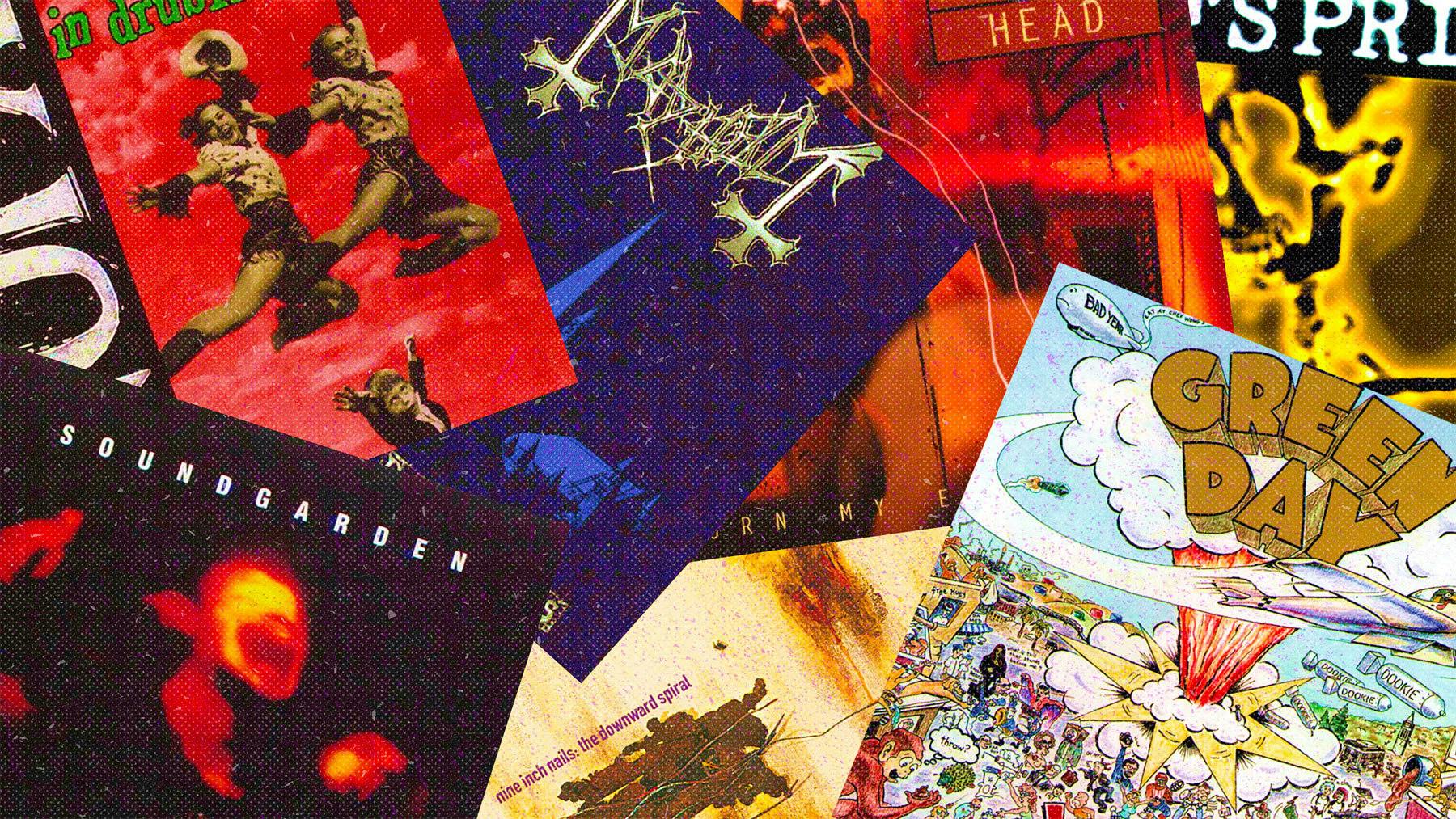How about everywhere? Because if 1994’s news headlines spelled out a grim era for heavy music, the albums released that year told an altogether more inspiring story – one of scenes reaching fruition, and groups fulfilling promise they’d barely hinted at. The phenomenon held as true for Bay Area punk, as for the wastelands of Norwegian black metal, as for the murky industrial scene – a sense of myriad saucepans reaching the boil, simultaneously.
The biggest story was Dookie, catapulting three snotty San Francisco punks into the same multi-platinum, heavily rotated stardom that had so recently wrecked Nirvana. While few predicted Dookie’s unit-shifting success, its radio-friendliness was impossible to deny. Like Nirvana, Green Day played pop songs, albeit cloaked in distortion and maximum decibellage, and delivered in a voice pungent with disdain and stinging wit.
Also like Nirvana, Green Day hadn’t evolved in isolation, and their breakout turned a spotlight on California’s fiercely independent punk-rock movement – fortuitously, as many of their contemporaries cut their finest records. The Offspring were the first to follow, the then-unknown group’s third album, Smash, propelled by hit singles Come Out And Play and Self Esteem to sell a staggering 11 million copies, making it the biggest-selling independent album of all time; these profits gratefully received by their label Epitaph, established by Bad Religion guitarist and songwriter Brett Gurewitz, 14 years earlier. After spending hours in his car listening to mixes of the album, he greeted his wife by telling her: “Honey, we’re going to be rich.”
This wave of interest in West Coast punk delivered a windfall, as the label also scored hits with NOFX’s million-selling fifth album Punk In Drublic and, the following year, Rancid’s blistering …And Out Come The Wolves. That last album’s title winked at the major labels circling Rancid while they stayed loyal to Epitaph. Bad Religion, however, joined Atlantic for their eighth album and belated breakthrough, Stranger Than Fiction.
The West Coast pop-punk explosion was momentous, and influential – that year, a then-unknown blink-182 cut their debut album, Cheshire Cat, at Westbeach Recorders, precisely because heroes Bad Religion and NOFX had recorded there – but across the U.S., other bands blending melody with caustic dynamics were coming of age. Connecticut-born geek Rivers Cuomo had relocated to Los Angeles, formed Weezer and committed to tape a batch of songs that allied pure pop melodies to alt.rock crunch and emotionally literate lyrics. Rivers was an unabashed Nirvana fan, but no slavish copyist, and Weezer’s Blue Album furthered Kurt’s savvy mix of noise and vulnerability, but with a voice uniquely theirs.
Emo – a nationwide movement, not tied to any state or city – resurfaced in 1994 with two key albums that defined the genre. Jawbreaker’s third album, 24 Hour Revenge Therapy, was 37 minutes of bellowed punk-rock intensity, swapping polish for passion, but still soaked in bruised tuneage. Sunny Day Real Estate’s debut, Diary, was a knotty, anguished but often brilliant beast, with a rhythmically complex tumult sent skyward by the brooding vocals of frontman Jeremy Enigk.
Neither album troubled the charts – “I know of a lot of bands that started because of our influence,” Jawbreaker drummer Adam Pfahler told Pitchfork recently, “but we were [only] selling in the tens of thousands” – though they’ve both since been recognised as landmarks. Among that ‘class of ‘94’, Kurt Cobain’s spirit could perhaps be heard clearest in their fusion of punk’s visceral dynamic with anguished lyrical chiaroscuro. SDRE imploded during sessions for their second album, but rhythm section Nate Mendel and William Goldsmith then joined Foo Fighters, whose debut album Dave Grohl had recorded alone in Seattle that October.
